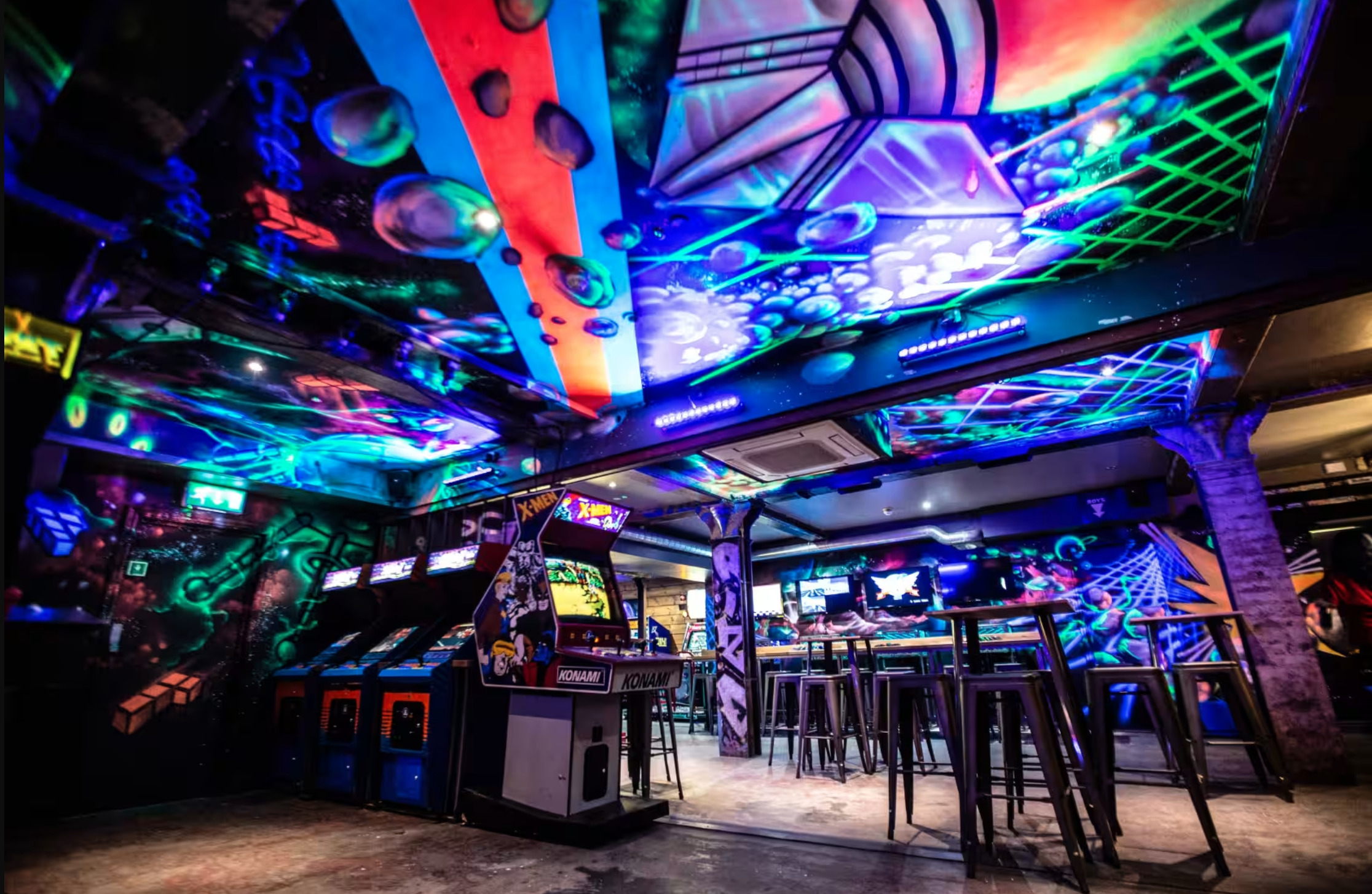With the decline of traditional retail spaces across the UK, secondary cities and towns have a unique opportunity to breathe new life into their high streets. The solution lies in repurposing vacant retail units into mixed-use developments that prioritise entertainment and experiential uses.
By turning these areas into vibrant destinations, local councils can not only drive footfall but also stimulate economic growth and community engagement. This playbook outlines how entertainment and experiential leisure can be the key to transformation, and how town councils can act swiftly to arrest the decline of the high street.
1. Entertainment and Experiential Uses as a Driver for Footfall
Making Towns a Destination
As traditional retail declines, people are seeking more engaging, experience-driven activities. Converting vacant retail spaces into entertainment hubs is the most effective way to attract visitors and make a town a regional destination. Colliers International emphasises the growing importance of location-based entertainment (LBE), which includes experiences such as immersive art installations, interactive exhibits, escape rooms, and virtual reality centres. These unique offerings can draw in foot traffic from neighbouring towns and cities, creating a ripple effect on the surrounding economy.
For instance, the transformation of retail units into immersive theatres or interactive museums can give visitors an entirely new reason to visit town centres, beyond shopping. This not only keeps people on the high street longer but also increases their likelihood to dine locally, stay overnight, and participate in other activities – driving up overall spending. Cushman & Wakefield further supports this by noting that mixed-use districts focused on entertainment have the potential to increase footfall by up to 20%, which revitalises adjacent retail and dining spaces.
Prioritising “Instagrammable” Moments
One key trend in creating successful entertainment-based destinations is integrating “Instagrammable” experiences—interactive art installations, themed entertainment spaces, or even pop-up exhibits. BNP Paribas Real Estate highlights how cultural and visual attractions can bring in younger audiences who are motivated by shareable moments. These visually striking attractions make a town stand out in the social media age, encouraging visitors to spread the word and generate organic buzz.
2. Building the Will to Act
Presenting the Economic Benefits
One of the most effective ways to gain commitment to action is by presenting the tangible economic benefits of repurposing vacant spaces and that entertainment-driven developments can not only replace lost retail revenue but surpass it.
For example, Savills reports that towns which have introduced experiential spaces into their high streets have seen up to a 30% increase in local business turnover within the first two years. By presenting data like this, developers and local business owners can make a compelling case for immediate action.
Highlighting the Social Impact
Beyond economic gains, it’s essential to emphasise the social benefits of mixed-use developments that focus on entertainment. Transforming vacant units into lively community spaces fosters social cohesion, creates jobs, and improves the overall quality of life for residents. Evidence also points to these projects reducing crime, increasing property values, and providing cultural enrichment for local populations.
Developers should partner with community groups and local stakeholders to show how entertainment spaces can cater to various demographics – from families and students to older residents. Mixed-use spaces that feature cinemas, performance venues, and interactive museums serve as hubs of activity for all, providing councils with a strong argument for regeneration.
Securing Funding and Partnerships
Town councils may hesitate due to perceived financial risk. To overcome this public-private partnerships (PPPs) or government grants for urban regeneration projects can reduce the financial burden on councils. Additionally, private investors or cultural institutions can contribute to the success of the development.
Cushman & Wakefield suggests that developers engage with potential partners early in the planning process to demonstrate financial viability. For example, partnerships with entertainment companies, tech firms (for virtual reality centres), or cultural organisations (for art installations) can alleviate concerns about funding and ensure long-term success.
3. Successful Implementation: A Step-by-Step Guide
Step 1: Conduct Feasibility Studies
Work with local business owners, residents, and council members to conduct a feasibility study that identifies the most suitable entertainment and experiential uses for the town’s vacant retail units.
Step 2: Create a Vision for the Mixed-Use Space
Present a clear and compelling vision for the mixed-use development that prioritises entertainment. Use examples from successful projects like King’s Cross or Liverpool ONE, which have revitalised areas through experiential elements.
Step 3: Build a Coalition of Supporters
Build a coalition of stakeholders – including local businesses, community groups, existing experience providers, and investors – who will benefit from the project. This adds credibility to the program and reduces risk.
Step 4: Develop a Funding Strategy
Develop a robust funding strategy, including public-private partnerships and potential grant opportunities. Outline how the project can be financially viable while delivering long-term economic and social benefits.
Step 5: Market the Project to Residents and Tourists
Create a marketing strategy that highlights the experiential and entertainment-driven nature of the mixed-use development. Focus on social media, local news, and community outreach to build anticipation and attract visitors.
Conclusion: Transforming Towns into Experiential Hubs
As the UK grapples with declining high streets, the opportunity to repurpose vacant retail units into vibrant, mixed-use developments focused on entertainment and immersive experiences is clearer than ever.
By driving footfall through experiential attractions, towns can become destinations in their own right, boosting local economies and creating social cohesion.
Town councils must act now, leveraging public-private partnerships and creative funding models to make these projects a reality. Through collaboration and bold decision-making, secondary cities and towns can secure a prosperous future for their high streets.
For further insights, explore the reports by Cushman & Wakefield and Colliers International.



